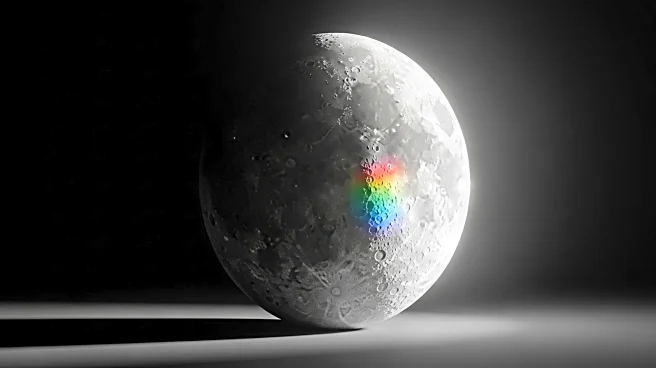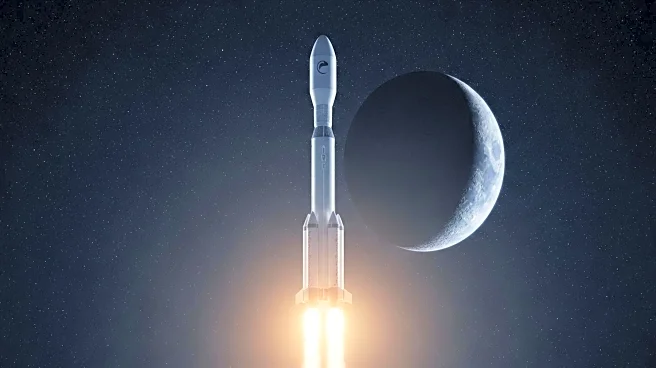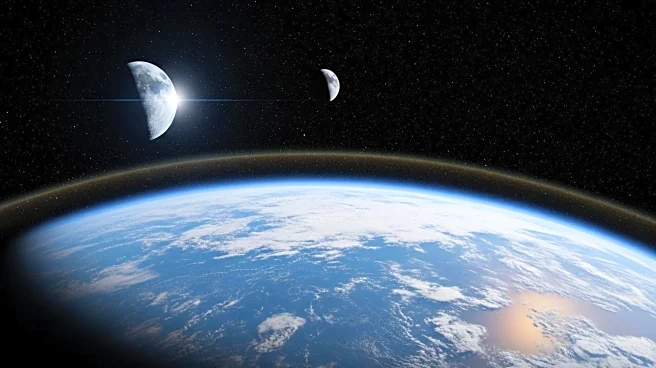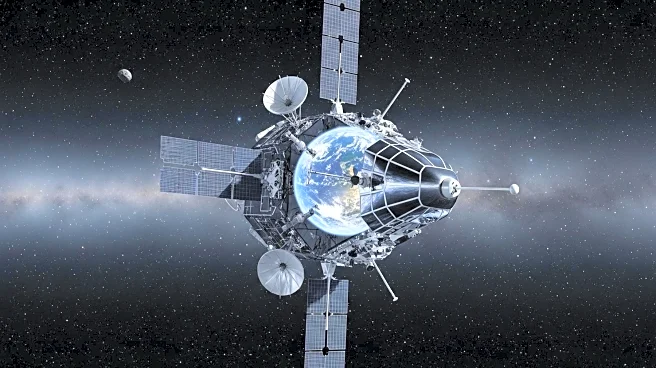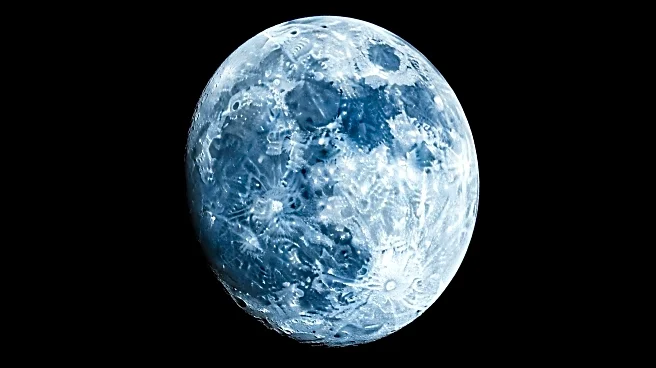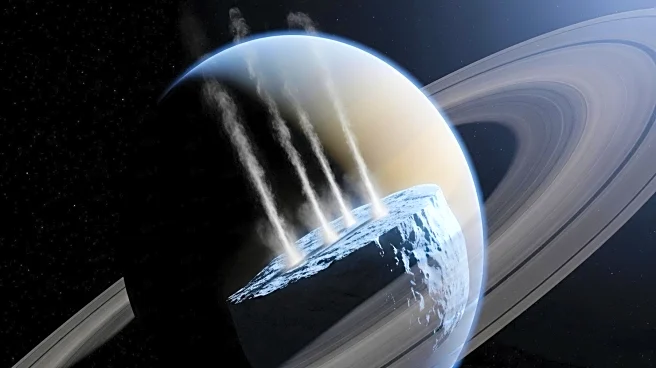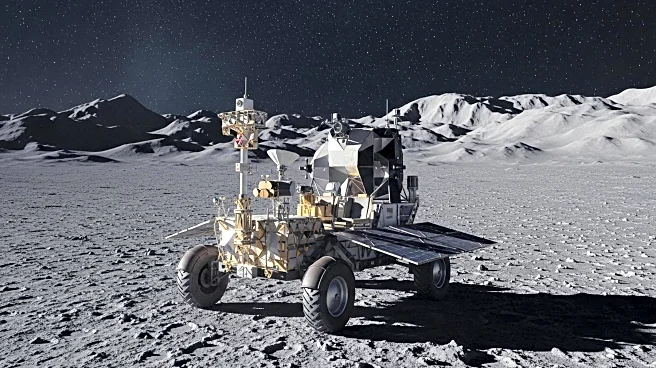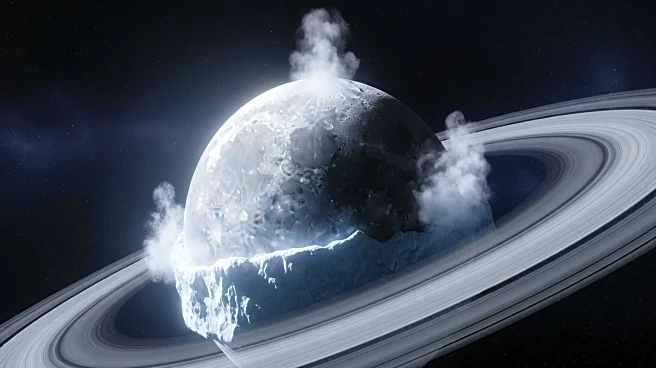What is the story about?
What's Happening?
A new study led by researchers from University College London and Peking University has revealed significant temperature differences between the near and far sides of the Moon. The research, published in Nature Geoscience, analyzed rock samples collected by China's Chang'e 6 spacecraft from the Moon's far side. These samples, dated to be 2.8 billion years old, showed that the far side's interior is approximately 100 degrees Celsius cooler than the near side. The study suggests that the far side has fewer heat-producing elements, such as uranium, thorium, and potassium, which may account for the cooler temperatures. This discovery provides evidence for the long-hypothesized temperature disparity between the Moon's two sides, which are also distinct in surface features and volcanic activity.
Why It's Important?
The findings have significant implications for understanding the Moon's geological history and its formation. The temperature difference suggests a varied distribution of heat-producing elements, which could have resulted from a massive impact event or other geological processes. This research enhances our knowledge of lunar geology and the Moon's evolution, potentially influencing future lunar exploration missions. Understanding the Moon's thermal history is crucial for planning future missions, as it affects the stability and composition of the lunar surface. The study also contributes to broader space exploration efforts, as insights into the Moon's formation can inform theories about planetary formation and evolution in our solar system.
What's Next?
The research team plans to further investigate the temperature imbalance between the Moon's near and far sides. They aim to determine the current temperature of the Moon's mantle and explore the long-term implications of this thermal disparity. Future studies may involve more detailed analysis of lunar samples and satellite data to refine temperature estimates. These efforts could lead to a better understanding of the Moon's geological processes and inform the design of future lunar missions. Additionally, the findings may prompt international collaboration in lunar exploration, as countries seek to uncover more about the Moon's mysterious far side.
Beyond the Headlines
The study raises questions about the Moon's formation and the impact of external forces on its geological development. The presence of fewer heat-producing elements on the far side suggests a complex history involving significant impact events or internal processes. This research may lead to a reevaluation of existing theories about the Moon's origin and its relationship with Earth. The findings also highlight the importance of international collaboration in space exploration, as the Chang'e 6 mission's success demonstrates the value of shared scientific endeavors.
AI Generated Content
Do you find this article useful?
